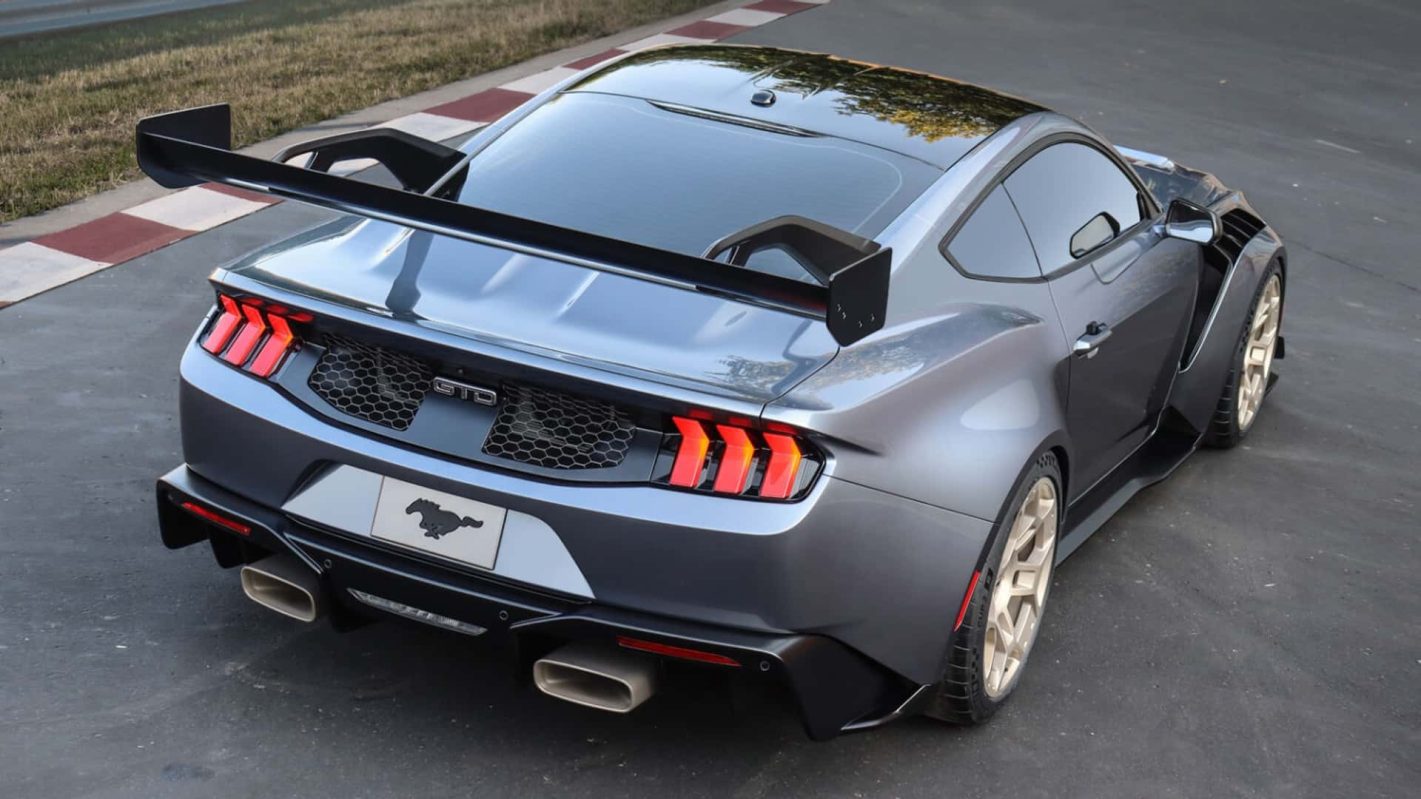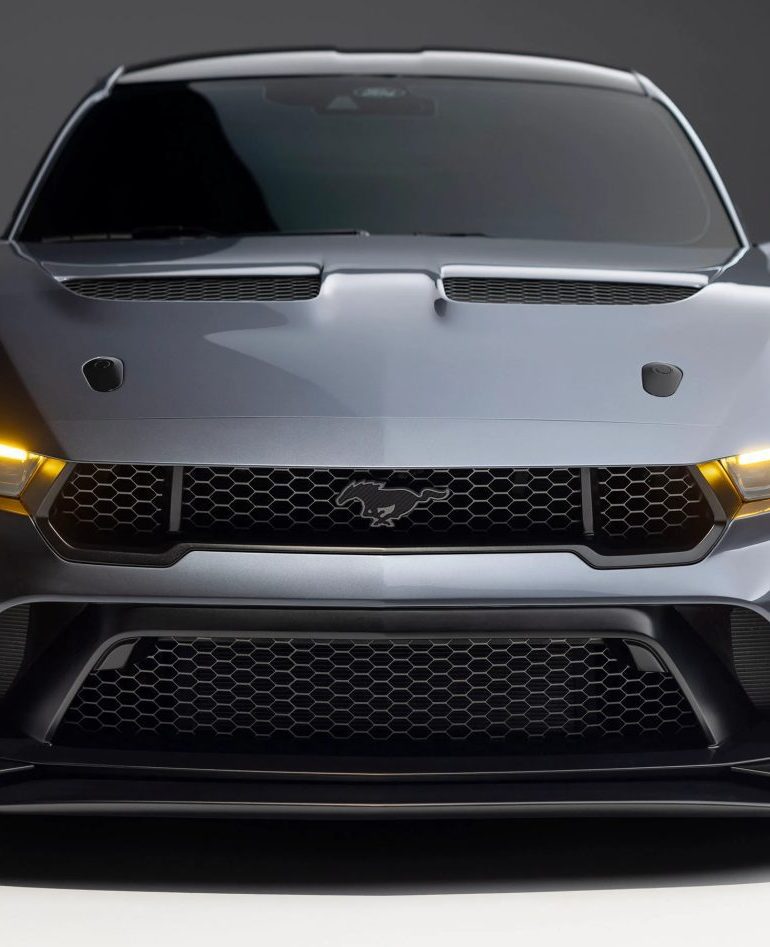It’s oh so wild and wicked with a decidedly menacing look about its widebody stance! In August 2023, Ford whipped the covers off the Mustang GTD, arguably its most ambitious Mustang iteration, coming almost six decades after the launch of the first-generation model.
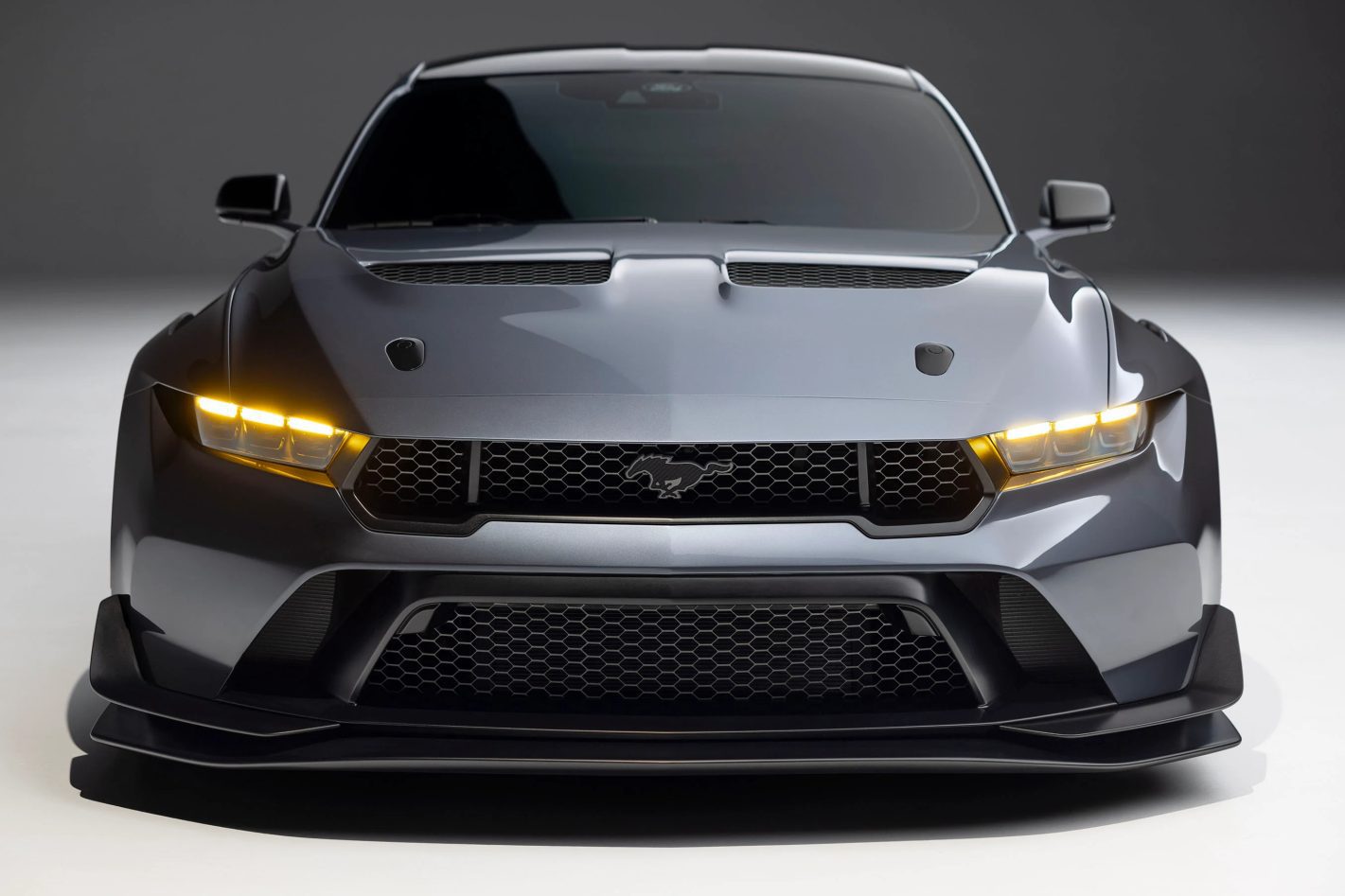
The Mustang GTD marks another chapter in the storied history of America’s most recognizable performance car. This time, however, things are different. With the Mustang GTD, Ford is pushing right into supercar territory, hoping its muscle car packs enough arsenal to establish its territory in what’s traditionally a hotly contested space within the performance car segment.
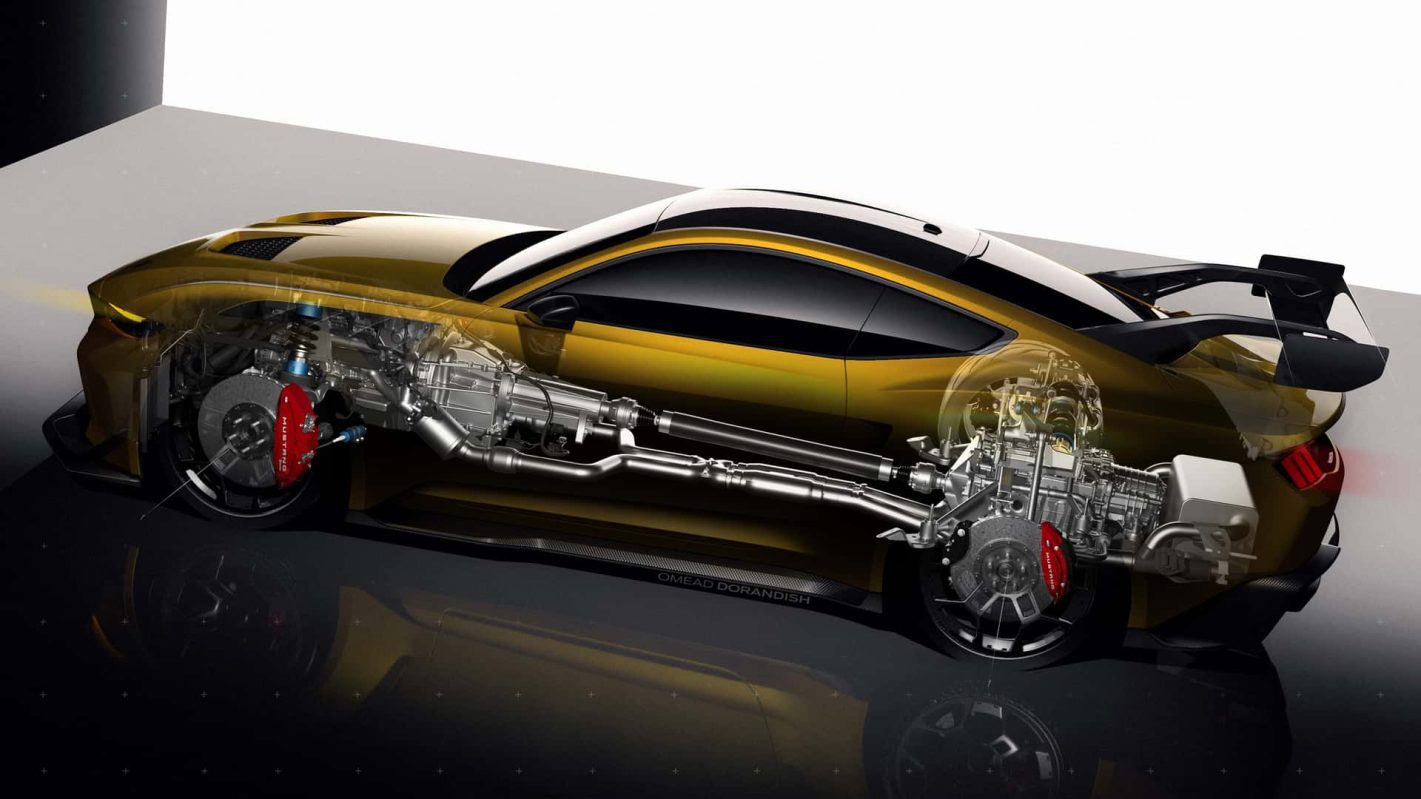
While the Ford Mustang GTD is still in its early stages, with customer cars expected to roll out in late 2024 or early 2025, the anticipation is palpable. If the initial impressions are anything to go by, the Mustang GTD may just be able to justify its eye-watering $325,000 price tag, an amount that makes it, by far, the most expensive production Mustang.
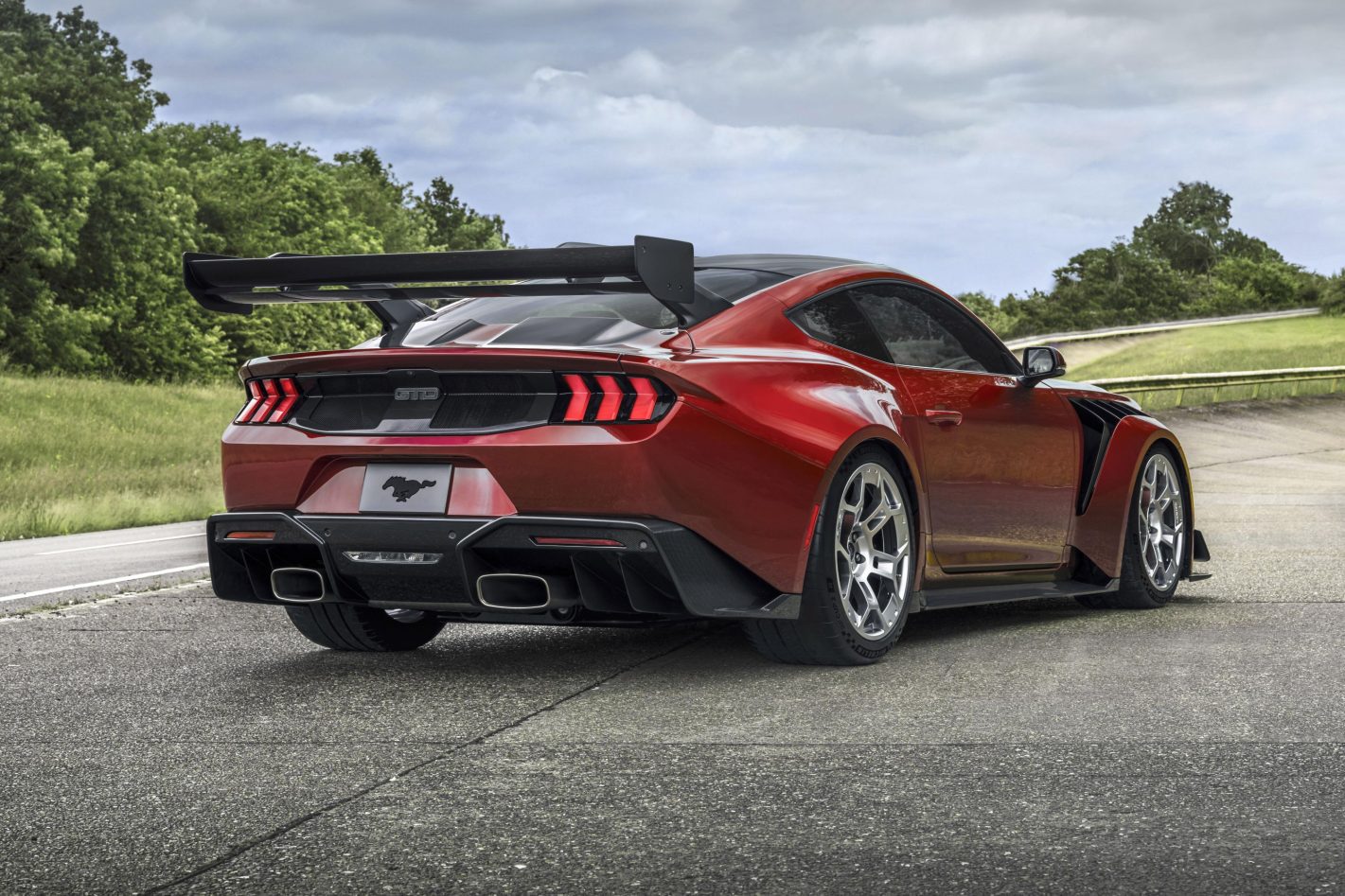
The Mustang GTD is a clear statement of intent.
The Mustang GTD is anything but subtle. Ford, the American carmaker, has taken a bold, in-your-face approach, starting with the supercar’s name. The ‘GTD’ is a clear indication of its departure from tradition. It stands for Grand Touring Daytona and is a direct reference to the IMSA GTD racing class, where the GT3 version of the Mustang competes.
Essentially, the Mustang is a race-tuned hunk of metal and carbon fibre bits wrapped around a monster powertrain. Ah, the powertrain. There is no murking around here; nothing fancy like electric batteries or hybrid setups. What Ford has done is supercharge a snarling 5.2L V8 engine tuned to crank out more than 800 horsepower! That’s a hefty chunk over the output of rivals like the McLaren 750S, the 2025 Aston Martin Vantage or even the new Porsche 911 hybrid supercar.
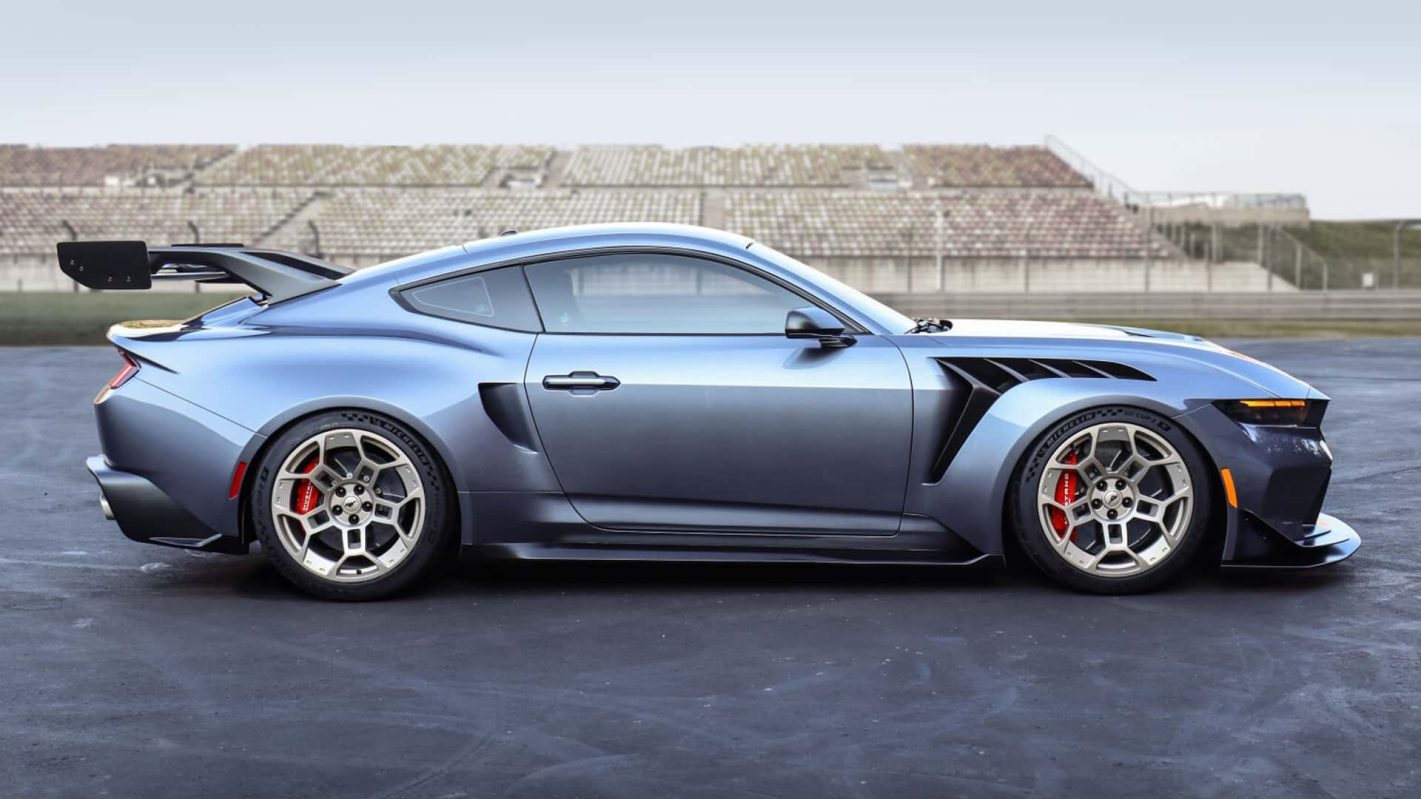
It is, by some margin, the most powerful production Mustang ever. In the era of engine downsizing in the automobile sector, Ford has chosen to buck the trend with the monster V8 at the heart of the Mustang GTD. In another apparent act of defiance, the Mustang GTD will not be confined to the tracks. No, this race-ready supercar has been fully homologated for road use. This means that the full fury of the supercharged Predator V8 can be unleashed on public roads.
The powerplant delivers a symphony of raw American muscle, helped in part by the titanium Akrapovic exhaust system. You will hear this beast long before it appears around the bend!
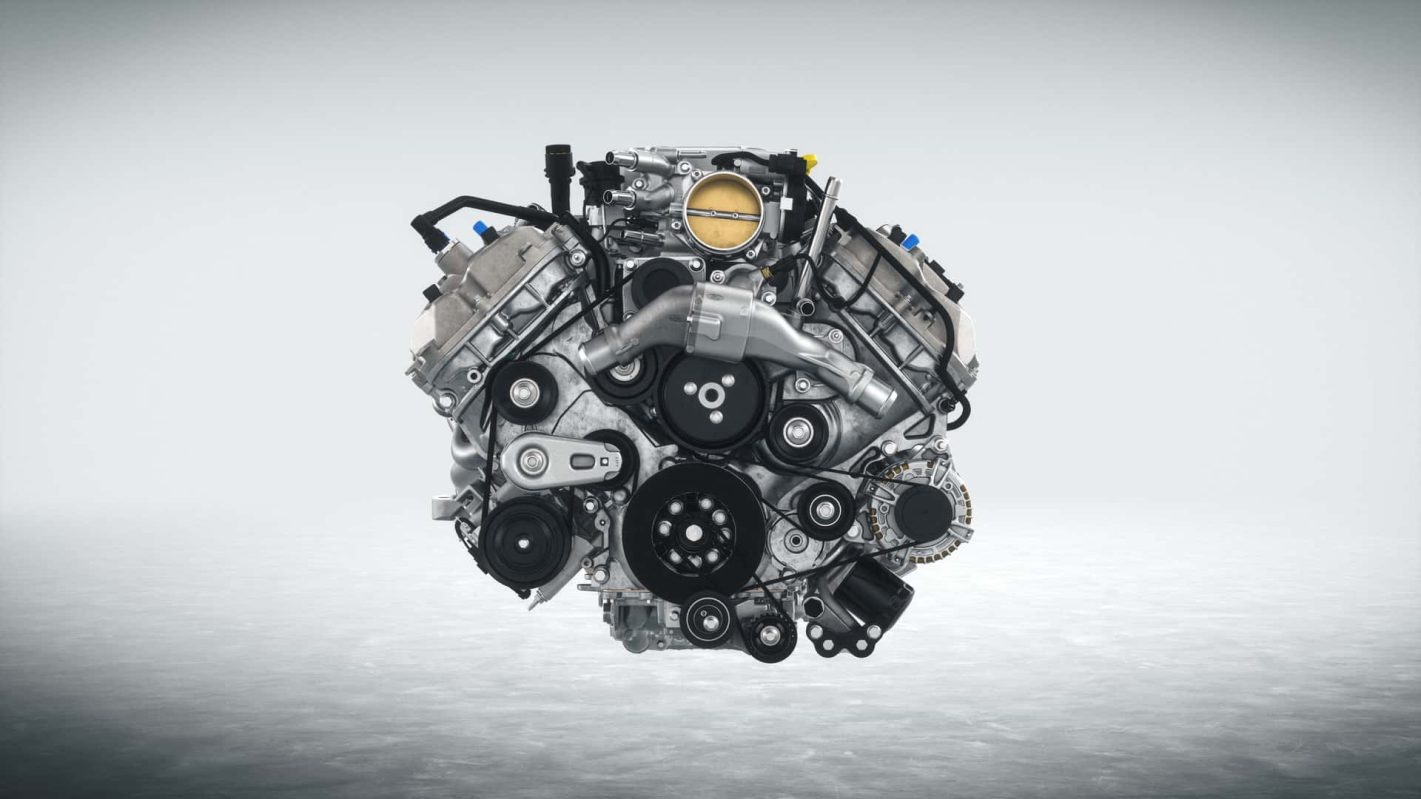
Much more than 800 horses
An 800-hp production Mustang is impressive on so many levels. However, there’s more to the Mustang GTD than what it packs under the hood. An 8-speed dual-clutch transmission feeds power to the rear wheels via a carbon-fibre driveshaft. It is capable of lightning-fast shifts and should help maximize power delivery and enhance the car’s track-focused performance.
Then, there’s the bodywork, a bold reimagining of the iconic pony car. The aggressive aerodynamics are immediately apparent with a wide, low stance and menacing front fascia. Every cutout, canard, and curve is purpose-designed to improve cooling, maximize downforce, and improve the Mustang GTD’s overall aerodynamic efficiency and performance.

According to Greg Goodall, Mustang GTD Chief Program Engineer, ‘every surface, body opening and vent on and under Mustang GTD’s body is functional. Some air is directed for cooling, other for aerodynamics and downforce. All of it to help GTD go faster or stick to the pavement no matter what the conditions are.’
It’s impossible to miss the rear wing. The humongous fixture sprouts from the Mustang’s C-pillar, extending well beyond the car’s rear end. The unique placement contributes to the car’s aggressive and distinctive profile. It is also highly functional, with several adjustable bits to maximize downforce and enhance stability at high speeds.
It’s going to be a tough battle.
The Mustang GTD is designed to provide an exhilarating and immersive driving experience. Its combination of raw power, precise handling and advanced technology makes it a true performance machine.
However, the brawny muscle car will be playing in a fiercely competitive space where some of the closest rivals have had countless years of experience to establish a firm foothold. Yes, there’s been a lot of hype around the imminent arrival of the Mustang GTD, but its shot at an enduring legacy will depend on how well it matches or surpasses the opposition. It will not be an easy task.
Checking out the competition
The Porsche 911 (992.1) GT3 RS will be one of the Mustang’s biggest rivals. The hardcore supercar is a supreme blend of power and performance, with its 500-hp naturally aspirated flat-six and a body style optimized for maximum aerodynamics. It even boasts a Drag Reduction System, just like the Mustang GTD. It will be interesting to see how the two Titans stack up against each other.
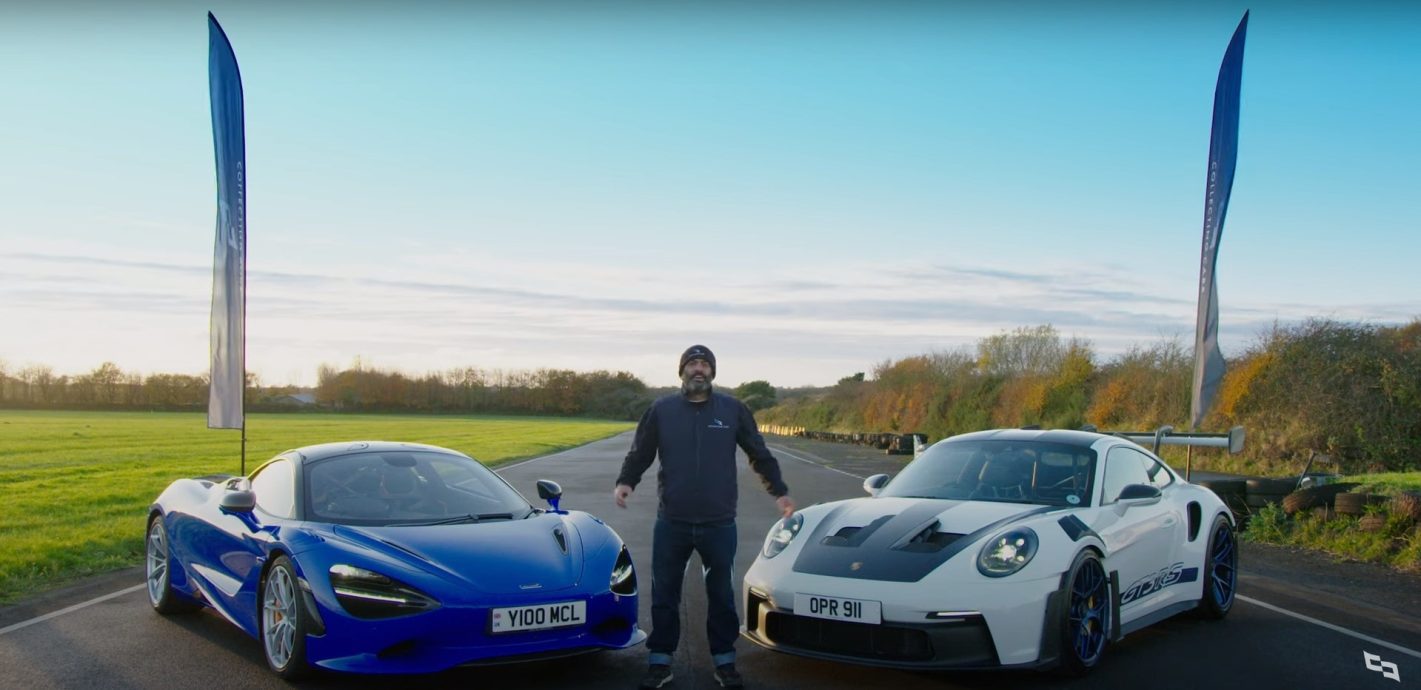
Then there is McLaren, with its 750S supercar, available in both coupe and spider body styles. The 750S is a brilliant evolution of the 720S, widely regarded as one of the best modern supercars. The 750S boasts McLaren’s familiar twin-turbo 4.0L V8, tweaked this time to generate 740 hp and 590 lb-ft of torque. The sleek supercar is not only capable of brutal straight-line speed but also impresses around sharp bends and corners, thanks to a host of clever engineering gimmicks packed into its frame.
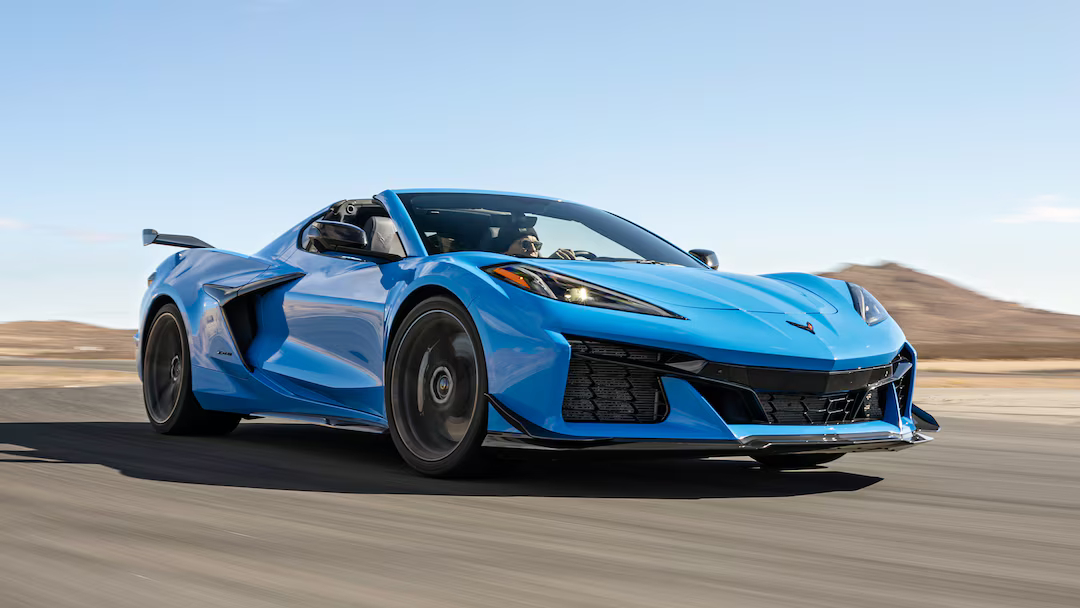
On the homefront, the Mustang GTD is going to have to slug it out with the formidable Chevrolet Corvette Z06. GM’s gamble to shift from a front-engine to a mid-engine layout paid off massively. It transformed the Corvette into a competent performance machine, able to get in the mix with supercar royalty like the McLaren 765LT. The Z06 model takes things even further with time-warping acceleration, proper supercar handling and capabilities as a daily driver.
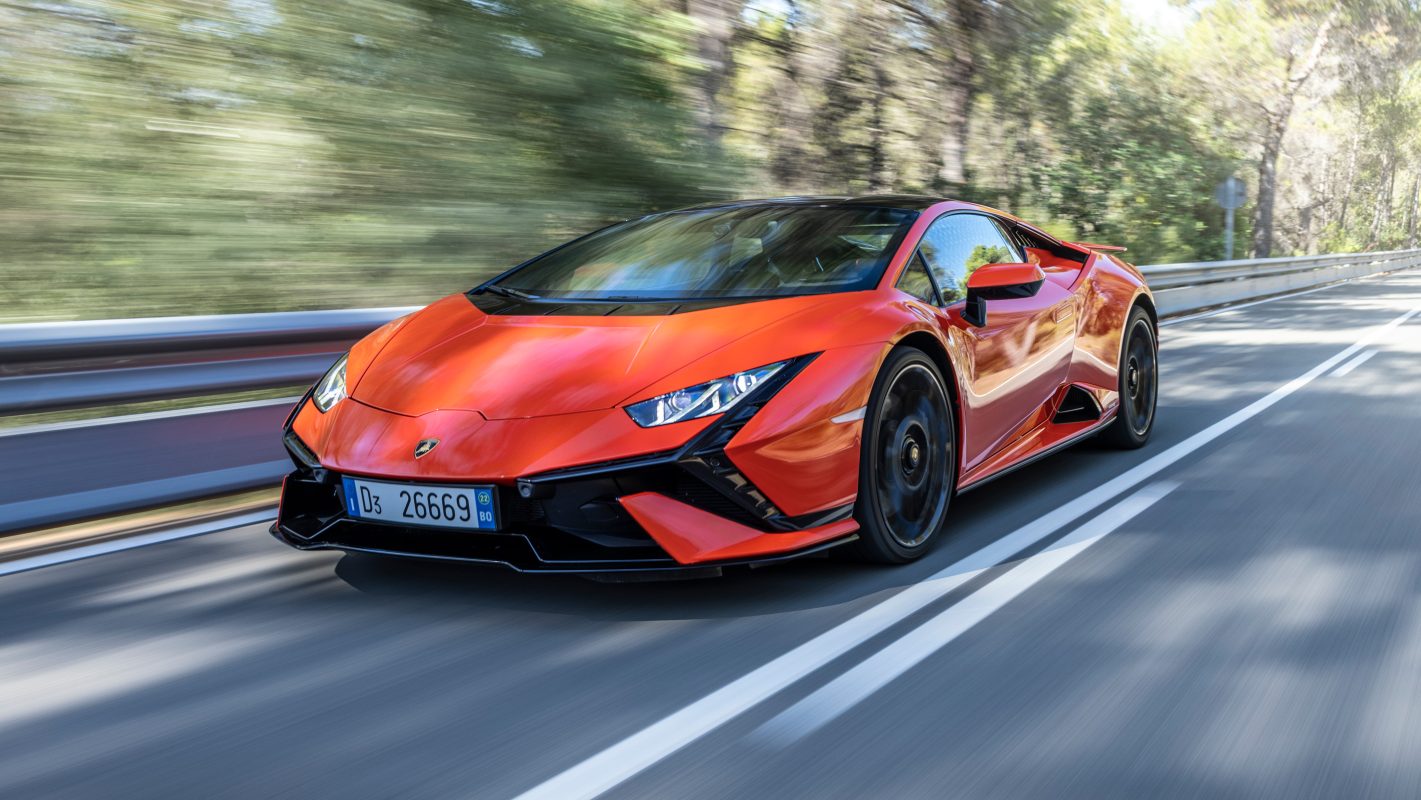
The Lamborghini Huracan Tecnica is a delicate balance between the Huracan EVO and the hardcore STO model. It boasts the same ferocious 640 horsepower V10 as the STO but with a curb weight closer to the Evo. It translates to thrilling acceleration and a sharper edge for carving corners. Then, there’s the rear-wheel steering system for added agility. The Huracan Tecnica is a driver’s dream, a performance package that will take some beating.
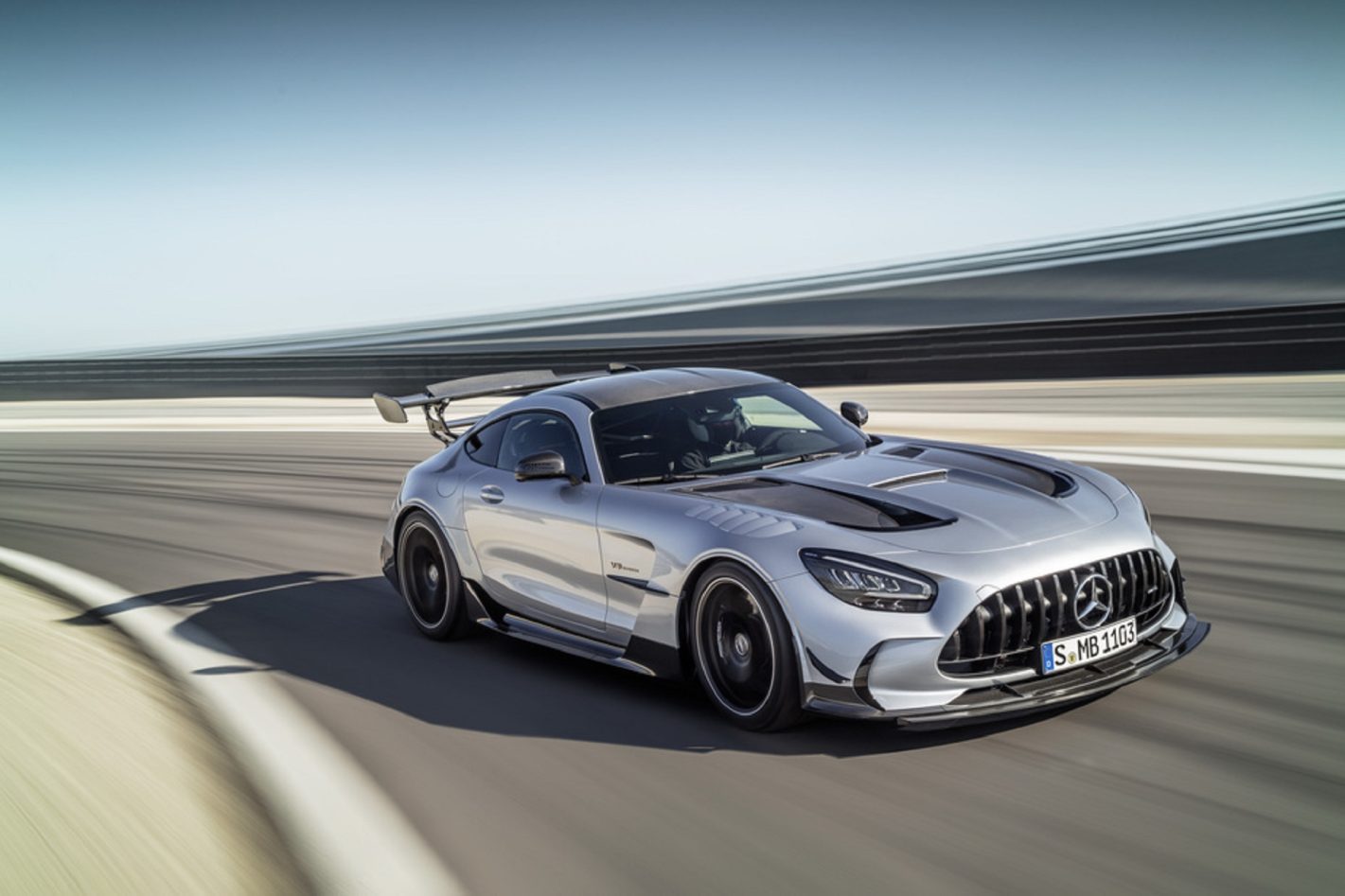
The Mercedes-AMG GT Black Series has been around for a few years, but discount it at your peril. Under the hood lies a hand-built, twin-turbocharged V8, primed to generate up to 720 hp. The Black Series also boasts an aggressive aero package that allows the car stick to the pavement around corners. The best part? It’s perfectly suited to life as a daily driver, with several driver assistance and comfort features built in as standard.
It’s not just the traditional heavyweights that await the Mustang GTD. Other players include the revamped Aston Martin Vantage, now packing 656 hp, more than a 100 hp bump over the previous model, and the outgoing 600-hp Nissan GT-R.
Packaging the Mustang GTD
The option-rich field is indicative of just how the supercar segment has become increasingly competitive over the years. The Mustang GTD sure has its work cut out, but apart from its claimed performance capabilities, another key factor should help it along when customer cars begin to roll out.
The Ford Mustang GTD is being marketed as a limited-production model. Ford has yet to release an official figure of the total number of Mustang GTDs it plans to make, but there are reports that only about 1,000 cars will be built.
In this market, exclusivity fuels the hype and demand. So far, it seems to be working well for the Mustang GTD. In May, Ford announced that it had received over 7,500 applications from interested customers who wanted to purchase the limited-production car.
The Mustang GTD has generated a lot of buzz, but only time will tell if it can live up to the hype. If it does hold its own against spirited competition, it could solidify the Mustang’s legacy as America’s favourite pony car.
